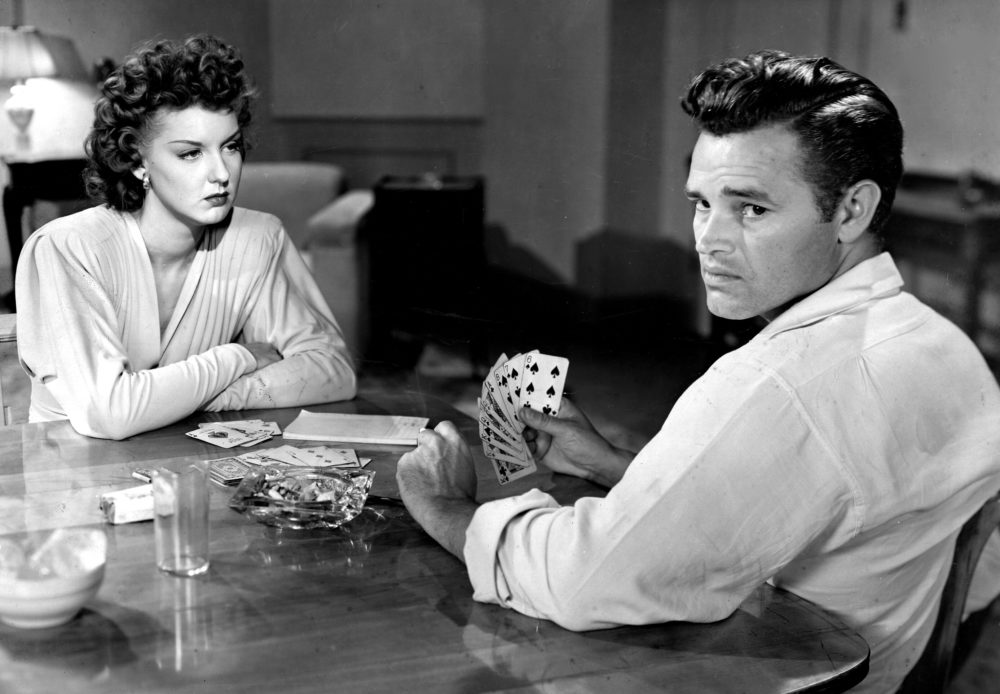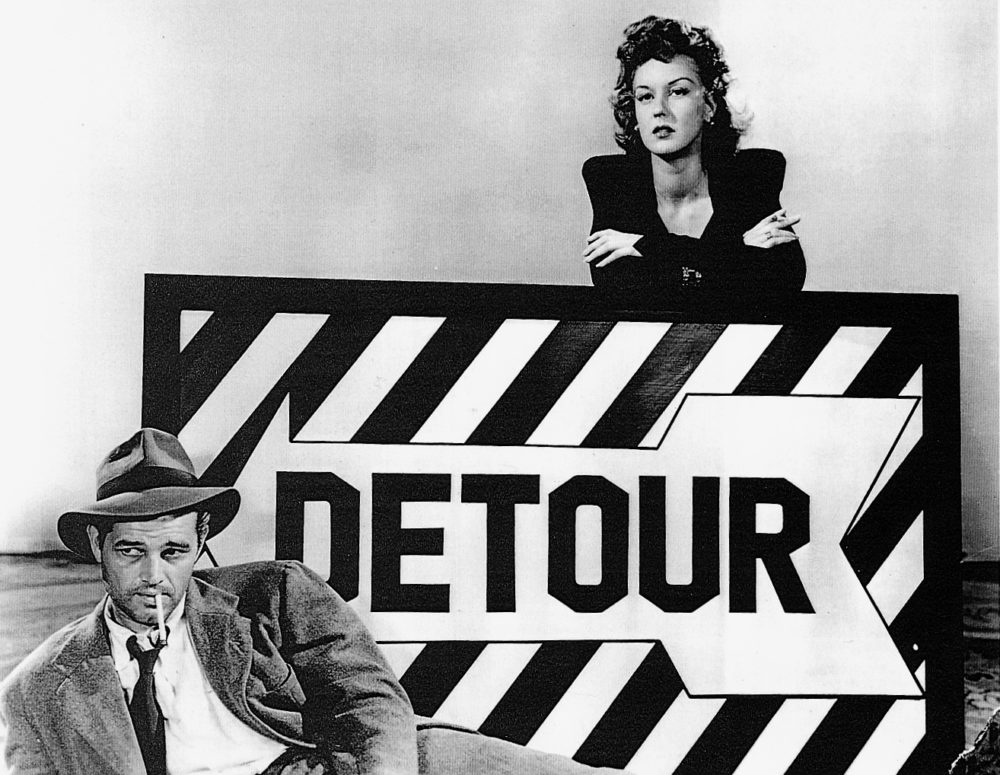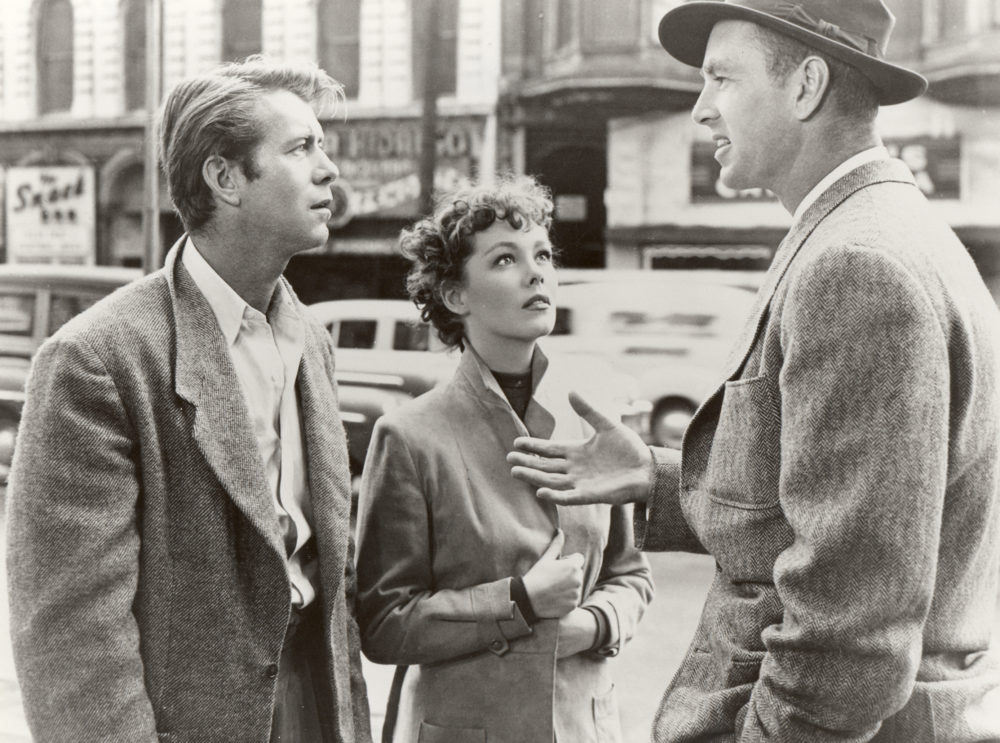Advertisement
Paying Respect To A Disreputable Form, Harvard Film Archive Celebrates 'The B-Film'

Calling something a “B-movie” used to have a negative connotation, dismissively referring to the genre films cranked out on the cheap to fill the bottom half of double bills back when movie studios owned and programmed their own theaters. But as time goes on, it becomes ever more apparent that the unassuming pleasures of these pictures have aged remarkably well. Lacking lavish resources or A-list casts — not to mention missing the inflated ostentatiousness that weighs down so many major productions — the leanest and meanest of these little films come from hunger, directed by filmmakers with something to prove and occasionally ingenious ways of working around budgetary and censorship restrictions.
The Harvard Film Archive’s upcoming retrospective “The B-Film: Low Budget Hollywood Cinema 1935-1959” aims to establish a canon of these largely unsung delights, paying respect to a disreputable form. With over 40 movies in the series — many cleverly programmed as double features — it’s an admirably expansive collection including everything from Sam Fuller war pictures (“The Steel Helmet”), Budd Boetticher westerns (“Ride Lonesome”), lurid crime classics (“Gun Crazy”) and even Ed Wood’s notorious kitsch calamity “Plan 9 from Outer Space.”
The series kicks off this weekend with a B-movie celebration must — Edgar G. Ulmer’s rotgut 1945 masterpiece “Detour.” Shot in only six days, it’s the morbidly fatalistic and often sickly funny story of a doomed hitchhiker (Tom Neal) on his way to Los Angeles to see his girl when, as his self-pitying narration informs us, “whichever way you turn, fate sticks out a foot to trip you.” Before long he’s being blackmailed by Ann Savage’s Vera, the most feral of film noir femme fatales, and our hapless hero’s misfortune escalates to almost cosmic proportions.

The shortcuts and workarounds in “Detour” are the stuff of legend. When Ulmer couldn’t afford to build sets of New York City streets he simply cranked up the fog machines in the studio so only a couple of prop signs would be visible in the shot. He makes savvy use of stock footage and rear projection as Band-aids over scenes, and every pedantic film professor loves to point out the highway sequence in which Ulmer flipped the negative to reverse the screen direction of passing cars, caring not a whit that it makes the automobiles have steering wheels on the right hand side, as if the Mojave desert location is now suddenly in England.
Of course, none of these gaffes matter in the slightest while you’re watching the film. If anything, they add to the movie’s mangy, unpredictable aura. The hardscabble, threadbare nature of “Detour” feels dangerous in the way polished Hollywood productions of its era didn’t dare. Ann Savage’s Vera isn’t a glammed-up maneater like Barbara Stanwyck in “Double Indemnity,” but rather the kind of crone you could picture winning a bar fight. “There ought to be a law against dames with claws,” a character complains, and Vera’s got the sharpest.
For decades, “Detour” languished in the public domain, seen only via shoddy, scratched-up prints and terrible TV transfers. The film was painstakingly restored in 2018 by the Academy Film Archive and now looks almost unrecognizably pristine. While I am in no way advocating for the poor presentation of motion pictures, I must note with a bit of nostalgia that the smeared, unkempt copies that always ran late Saturday nights on high-numbered UHF channels lent the movie an added aura of menace. “Detour” looks pretty spiffy now, but its soul is still dingy.
Advertisement

This weekend, the HFA has also packaged a slick double feature of crime pictures that complement each other quite nicely. The 1957 “Plunder Road” was directed by Hubert Cornfield, a Turkish-born filmmaker who grew up in Paris, palling around with New Wave legends Jean-Luc Godard and Jean-Pierre Melville. As one might expect, his terse tale of a gold robbery and its aftermath is heavily French-inflected for a Hollywood offering, opening with a 13-minute heist sequence that’s nearly devoid of dialogue. The rest of the picture follows the travails of three getaway trucks overloaded with millions of dollars in bullion, nodding more than once to Henri-Georges Clouzot’s “The Wages of Fear” along the way. I’m a sucker for thrillers that revolve around logistics. Sure, it’s one thing to steal all that gold, but then how are you gonna get it anywhere?
"Plunder Road" is paired with André De Toth’s terrific 1953 “Crime Wave,” a bruising police procedural borrowing the outdoor, ground-level camerawork from the Italian neorealist films of its era, and reportedly the first movie to be shot on Los Angeles streets at night. Sterling Hayden stars as a snarling, toothpick-chomping detective tracking three escaped cons on a killing spree. He sadistically leans hard on one of their old cellmates (Gene Nelson) and Hayden’s hunches turn out to be about half-right, with a few surprises.
This is propulsive, no-fuss filmmaking with a payoff that feels like coming to the end of a yellowed paperback you couldn’t put down. (It makes perfect sense that “L.A. Confidential” author James Ellroy cites “Crime Wave” as one of his favorite movies.) The film also features a terrifying performance from a newcomer named Charles Buchinsky, who hit it big a few years later after changing his last name to Bronson. Like most of the offerings in the HFA’s series, this one clocks in at a hair over 70 minutes, demonstrating the ruthless efficiency with which B-movie directors could give you an entire crime saga in less time than it takes to watch a late-period “Sons of Anarchy” episode. It’s about time they got their due.
“The B-Film: Low Budget Hollywood Cinema 1935-1959” begins Friday, Sept. 13 and runs through Monday, Nov. 25.
